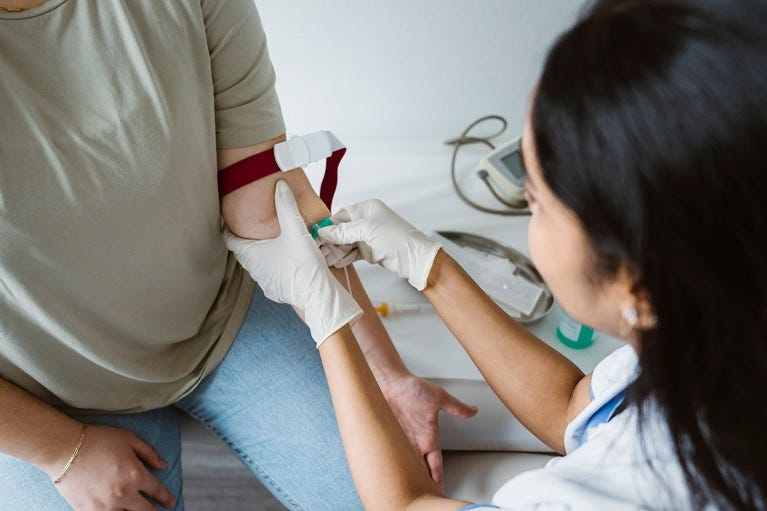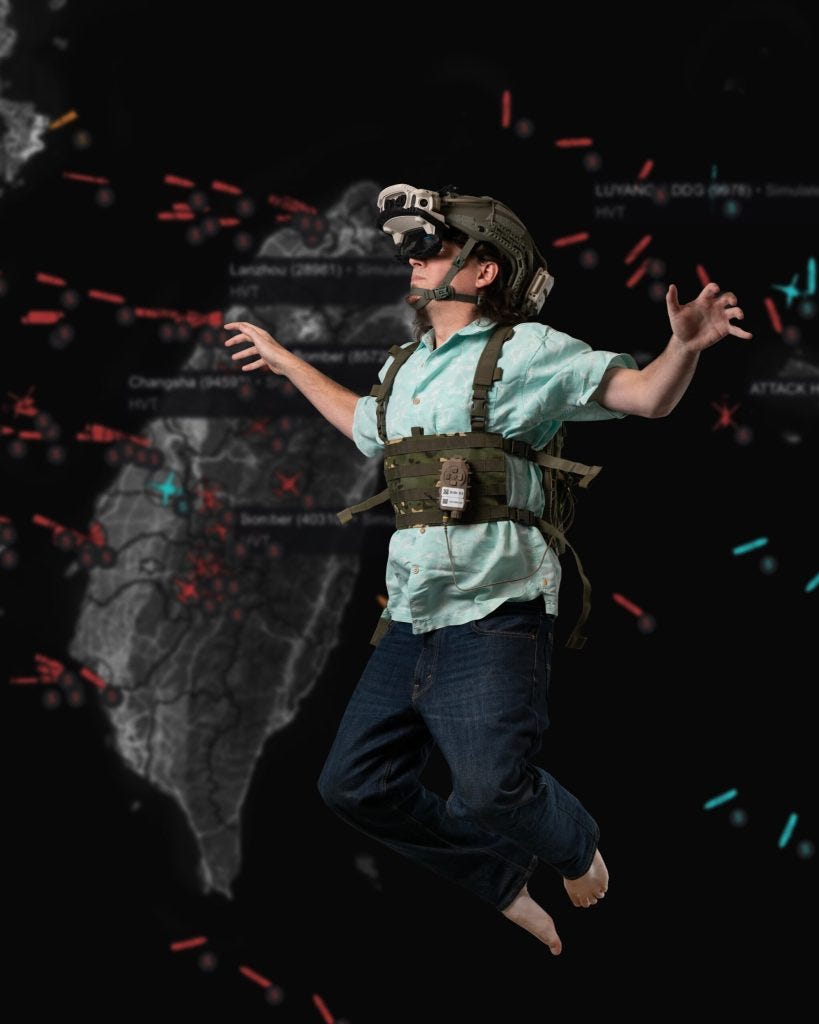Weekly Dose of Optimism #131
KM3NeT, PAC-MANN, Cost Physics, IVAS, QuEra
Hi friends 👋,
Happy Friday and welcome back to our 131st Weekly Dose of Optimism. Usually my X feed is filled with all of the cool things we usually cover in the Weekly Dose, but this week the algo was feeding me non-stop Eagles content. I am OK with that. Go Birds! But don’t worry, it wasn’t too hard to find five stories (outside of the Eagles) that had me optimistic about our future.
Let’s get to it.
Today’s Weekly Dose is brought to you by… Ramp, Rox, and Vanta
Packy here. You read a lot (often here) about AI doing the things humans don’t want to do so that we can spend our time doing the things we do. But what does that mean in practice?
Vanta automates compliance & streamlines security reviews so you can sell to enterprise.
Rox’s agent swarms support the best sellers so they can focus on the human side of selling.
Ramp saves your finance team time so they can get strategic with your company’s money.
Importantly, all three are giving me the time and space to make Not Boring’s 2025 essays deeper and better than ever. Say thanks, sign up, and go give yourself time back: win/win/win.
(1) Observation of an ultra-high-energy cosmic neutrino with KM3NeT
The KM3NeT Collaboration in Nature
Here we report an exceptionally high-energy event observed by KM3NeT, the deep-sea neutrino telescope in the Mediterranean Sea4, which we associate with a cosmic neutrino detection.
Bang!
The KM3NeT deep-sea telescope has detected the highest-energy neutrino ever recorded, estimated at 220 million billion electronvolts—far beyond anything seen before. A neutrino is a tiny, nearly invisible particle that passes through almost everything without interacting. The discovery was made when KM3NeT, still under construction, detected a muon—a secondary particle created by a neutrino hitting nearby rock or seawater—leaving a bright trail in the detector. This confirms that ultra-high-energy neutrinos exist and opens a new window into the most extreme environments in the universe.
Scientists believe this neutrino could have been generated by a powerful cosmic accelerator, such as a supermassive black hole or a gamma-ray burst, or it might be a rare "cosmogenic" neutrino linked to the Big Bang’s remnants. Or more simply put, scientists don’t yet know how this neutrino was generated. The finding challenges current models and suggests more undiscovered high-energy particles could be out there. As KM3NeT expands, researchers hope to pinpoint the neutrino’s origin and uncover new cosmic secrets.
(2) Early detection of pancreatic cancer by a high-throughput protease-activated nanosensor assay
Mira et al in Science
Montoya Mira et al. designed a rapid, noninvasive assay based on a fluorescently labeled protease-sensitive peptide coupled to a magnetic nanosensor to detect protease activity from a small sample of blood. The assay, termed “PAC-MANN-1,” was optimized to detect all stages of PDAC with better performance than the clinical biomarker CA 19-9.
Call this test PAC-MANN Jones, because it’s providing shutdown coverage of pancreatic cancer. (This was not a crossover I ever anticipated).
Researchers developed a blood test, called PAC-MANN, that detects pancreatic cancer (PDAC) by measuring specific enzyme activity in the blood. The test, using nanosensors, identifies a cancer-associated protease with high accuracy, distinguishing PDAC from both healthy individuals and those with other pancreatic diseases.
In a study of 356 patients, the test showed 98% specificity and 73% sensitivity, with improved performance when combined with the existing CA 19-9 biomarker. As we’ve talked about before, early detection is the closest thing we have to a cure for cancer. And PAC-MANN’s ability to provide early detection of PDAC could mean significantly higher survival rates.
(3) Reindustrialization from First Principles: Cost Physics
Denver Rayburn
Today, we stand at another such moment. Intelligence, automation, and cheap abundant energy are converging to rewrite the economics of production. Beyond industrial or trade policy, something more profound is changing: the underlying cost physics of manufacturing (coined with inspiration from Coogan’s Law.) And unlike previous technological revolutions, this transformation may be permanent – creating a lasting shift that uniquely favors American manufacturing.
America’s role in the world has changed many times in its history.
Hell, America’s role in the world has changed many times over the last 6 weeks.
More and more folks believe that America once again has to, and can, take on its role of the manufacturing powerhouse it once was. Denver Rayburn, in this excellent primer, lays out his thinking on how America may be favorably positioned to take on that role once again.
Rayburn argues that the convergence of AI, automation, and cheap energy is permanently reshaping manufacturing economics and eliminating the labor cost arbitrage that drove manufacturing out of the U.S. in the first place. In a world where labor cost is no longer the primary input cost, a country that has abundant and cheap energy, the capital markets to finance an automation rollout, and is a leader in artificial intelligence finds itself in a very strong position. Thankfully, the U.S. checks all of those boxes.
It’s kind of scary to think how much of U.S. foreign and domestic policy really hinges on a) whether or not this transition is actually underway and b) how well positioned the U.S. is in this transition. Let’s hope Rayburn is right and that both the government and private sector take advantage of this unique opportunity in history to rebuild America as a manufacturing hub.
(4) Anduril takes over Microsoft's $22 billion US Army headset program
By Reuters
Palmer Luckey-founded defense tech startup Anduril will take over the development and production of Microsoft's mixed-reality headset program for the U.S. Army, the companies said on Tuesday. Anduril will assume control over production, as well as future hardware and software development and delivery timelines for the Integrated Visual Augmentation System (IVAS) project, the companies said.
“Whatever you are imagining, however crazy you imagine I am, multiply it by ten and then do it again. I am back, and I am only getting started.” - Palmer Luckey on X, February 11th 2025.
Anduril is taking over development and production of Microsoft’s $22B mixed-reality headset program for the U.S. Army’s Integrated Visual Augmentation System (IVAS). IVAS is a military AR/VR headset designed to enhance soldiers' situational awareness, decision-making, and battlefield effectiveness. An AR/VR headset for the military…Palmer Luckey was born to win this contract.
Some specifics on the deal: Anduril is taking over production, hardware and software development, and delivery timelines for the program from Microsoft. Microsoft Azure will remain the preferred cloud provider for IVAS and Anduril’s AI-driven defense technologies. The total IVAS contract is worth $22B over a ten year period and in 2025 the Army requested $255 million of that budget to procure 3,162 IVAS systems.
This is another massive win for Anudril, which has been on absolute tear as of late. Mega factories, mega rounds, mega contracts, etc, etc. We believe Anduril being on an absolute tear is a good thing not only for Anduril, and the military, and the American people, but for the entire world. Peace through strength. And increasingly, no company is contributing more to the velocity of our nation’s strength than Anduril.
(5) Quantum-computing technology that makes qubits from atoms wins mega investment
Elizabeth Gibney for Nature
QuEra, an academic spin-out company that uses atoms and lasers to encode quantum bits or ‘qubits’, announced on 11 February that it has raised US$230 million in funding — one of the largest single investments in any quantum firm so far.
QuEra, a Harvard and MIT spin-out, has raised $230 million—one of the largest single investments in a quantum company—signaling neutral atom quantum computing as a major player in the field. Neutral atom quantum computing traps rubidium atoms with lasers and encodes quantum information in their electron energy levels, offering scalable and stable qubits without the need for extreme cooling. This approach has historically failed at precisely controlling atoms, but a 2019 breakthrough in laser-based techniques has significantly improved accuracy.
Practical quantum computing requires tens of thousands of qubits to reach utility, and we’re still a ways off from that. But with major companies like Google and IBM investing billions into R&D and a wave of newly funded startups introducing novel architectures, the race for quantum is heating up. As neutral atom systems close the performance gap with more established technologies, competition in the field is shifting from feasibility to scalability, and QuEra’s funding signals growing confidence in this approach as a contender for the future of quantum computing.
Have a great weekend y’all.
Thanks to Ramp, Rox, and Vanta for sponsoring! We’ll be back in your inbox next week.
Thanks for reading,
Packy + Dan






1) "In a world where labor cost is no longer the primary input cost, a country that has abundant and cheap energy, the capital markets to finance an automation rollout, and is a leader in artificial intelligence finds itself in a very strong position. Thankfully, the U.S. checks all of those boxes."
Hard to understate just how much of an advantage the US has, with fracking and shale, ~60% of global market cap, and neck and neck with China on AI.
2) "An AR/VR headset for the military…Palmer Luckey was born to win this contract." 😂
“Peace through strength” liked that line !